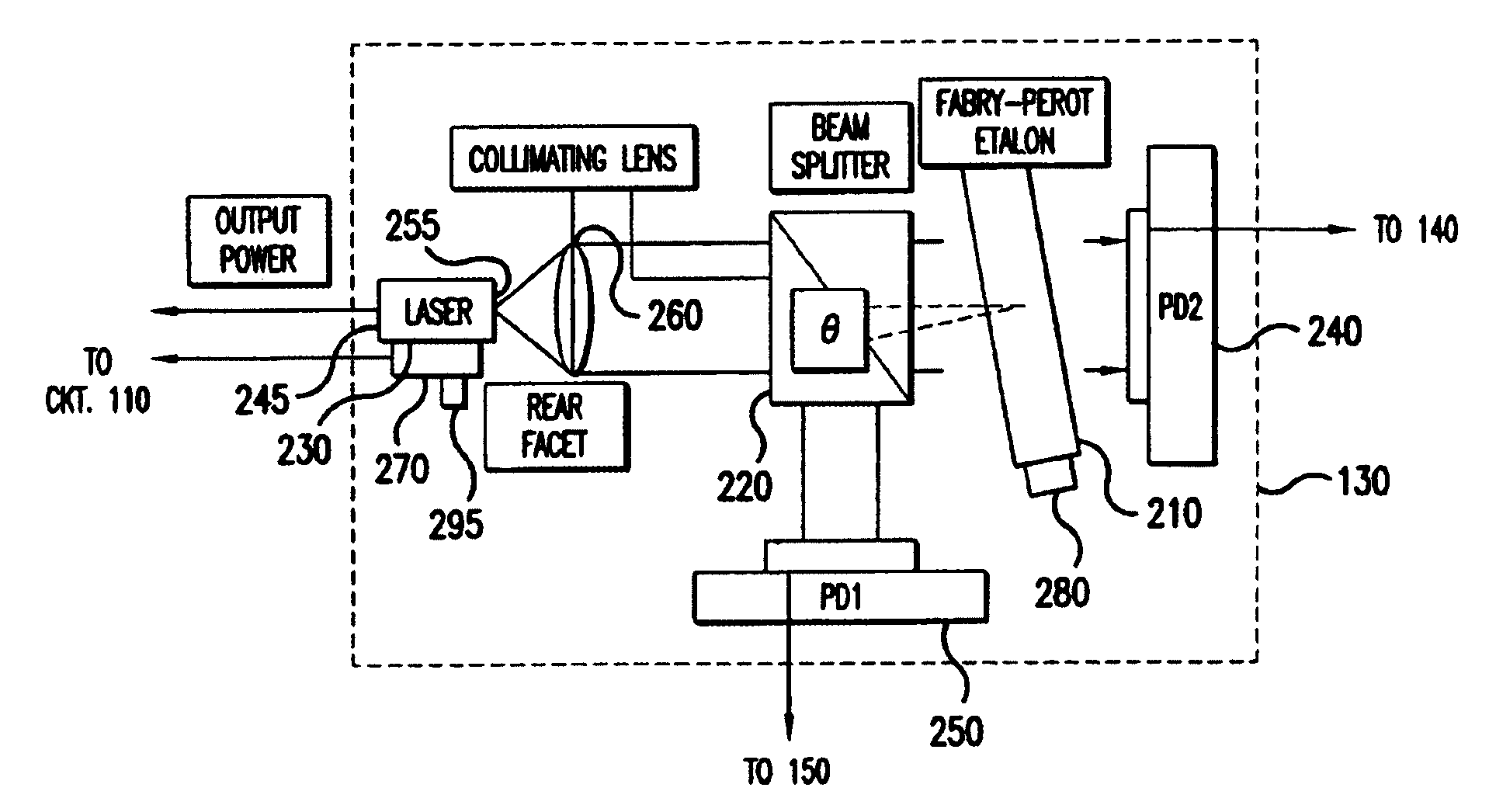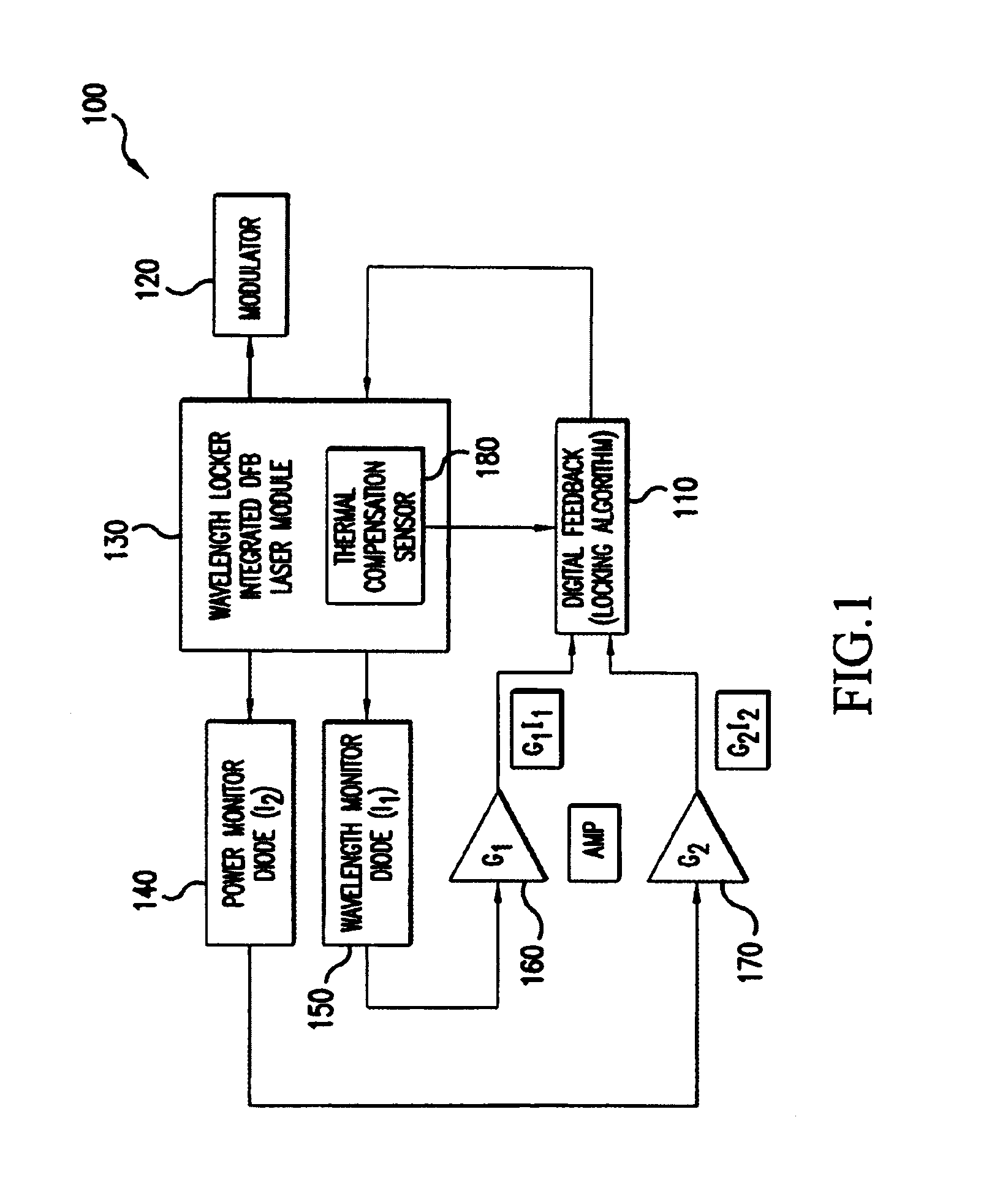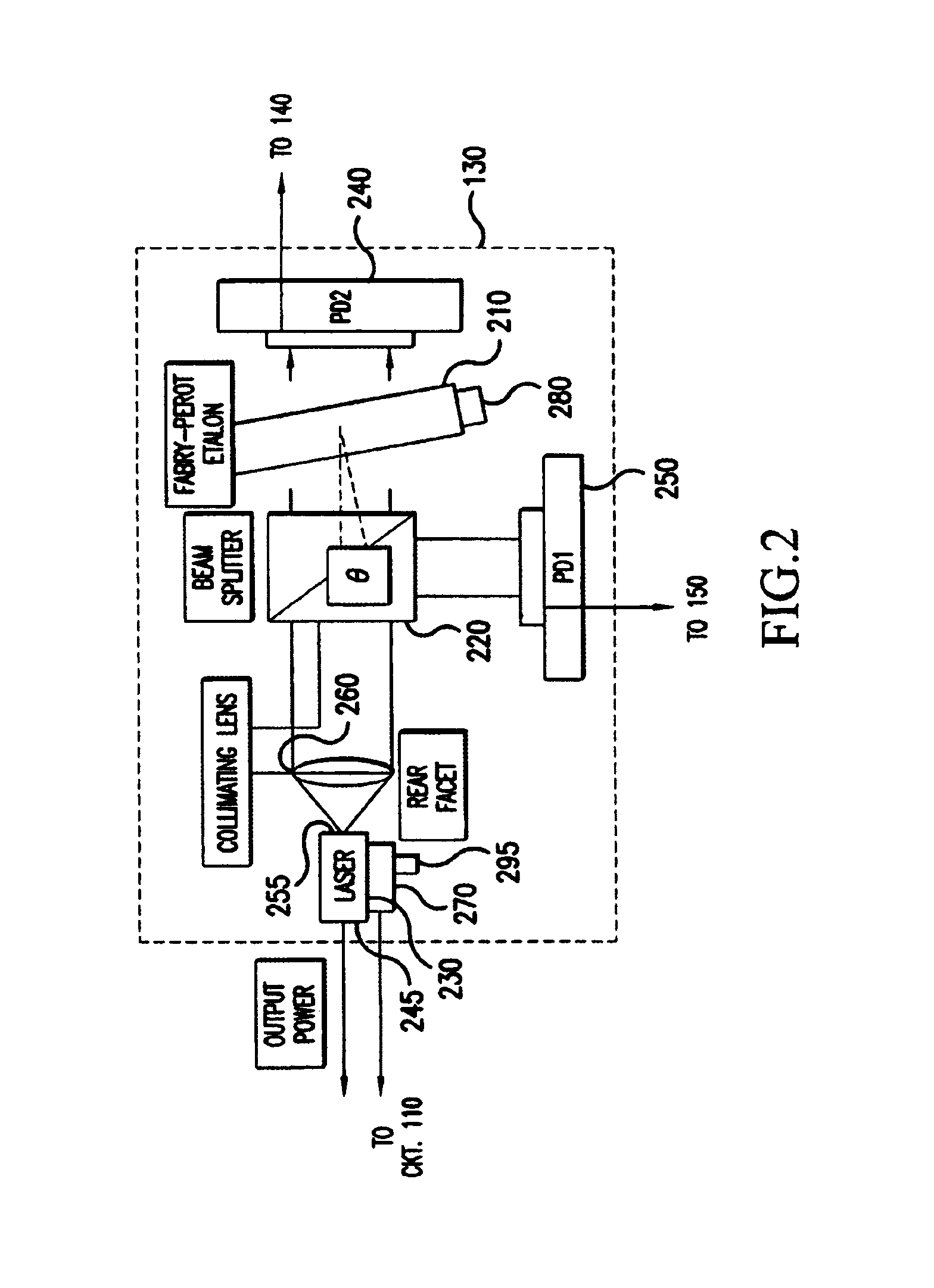Wavelength locking scheme and algorithm for ultra-high density WDM system
a technology of ultra-high density and locking scheme, applied in the direction of electromagnetic transmission, electromagnetic transmission, semiconductor lasers, etc., can solve the problems of thermal expansion of the filter, the wavelength of the laser can drift with over extended periods of time, and the change of the refractive index of the filter
- Summary
- Abstract
- Description
- Claims
- Application Information
AI Technical Summary
Problems solved by technology
Method used
Image
Examples
Embodiment Construction
[0017]The present invention is directed toward a laser wavelength locking scheme suitable for incorporation into WDM systems having channel spacings of 25 GHz or less. In a preferred embodiment, light output from the laser is supplied to a filtering element, such as an in-fiber Bragg grating or an etalon, and photodetectors are used to sense light transmitted by the filtering element and input to the filtering element. Alternatively one of the photodetectors senses light reflected by the filtering element. A measured ratio corresponding to a quotient of the photocurrents generated by the photodetectors or the quotient itself is calculated and compared to a desired ratio corresponding to a measured temperature of the filtering element when the filtering element transmits the desired wavelength to be locked. Based on the comparison of the desired and measured ratios, a temperature error value is calculated which is used to adjust the laser temperature, as well as the laser wavelength....
PUM
 Login to View More
Login to View More Abstract
Description
Claims
Application Information
 Login to View More
Login to View More - R&D
- Intellectual Property
- Life Sciences
- Materials
- Tech Scout
- Unparalleled Data Quality
- Higher Quality Content
- 60% Fewer Hallucinations
Browse by: Latest US Patents, China's latest patents, Technical Efficacy Thesaurus, Application Domain, Technology Topic, Popular Technical Reports.
© 2025 PatSnap. All rights reserved.Legal|Privacy policy|Modern Slavery Act Transparency Statement|Sitemap|About US| Contact US: help@patsnap.com



